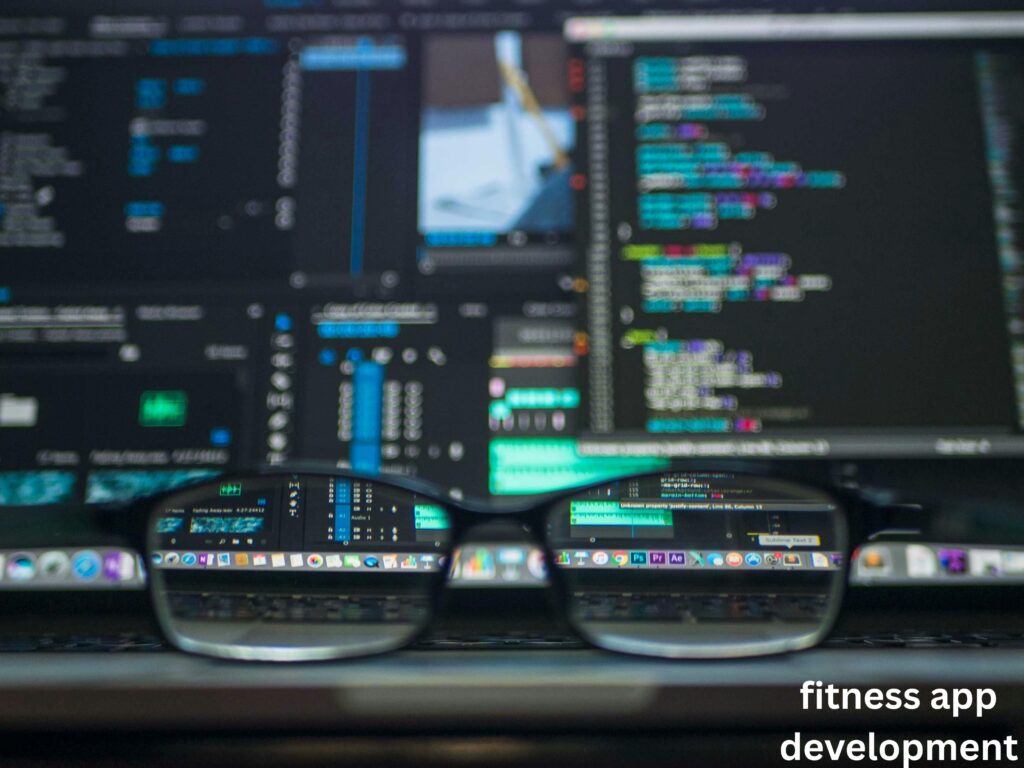In today’s digital-first world, mobile applications have become essential tools for businesses and individuals alike. But what exactly is meant by app development? This comprehensive guide explores the fundamentals of application development, its processes, technologies, and future trends—with special insights into specialized areas like fitness app development.
Understanding App Development: The Basics
App development refers to the process of creating software applications that run on various platforms such as smartphones, tablets, desktop computers, or web browsers. It encompasses all stages from initial concept to final deployment and maintenance, involving programming, design, testing, and optimization.
Modern app development isn’t just about writing code—it’s about solving problems, creating exceptional user experiences, and delivering value to users through technology. Whether it’s a simple calculator app or a complex fitness tracking system, the development process follows similar core principles while adapting to specific requirements.
Types of Applications
Applications come in various forms, each with distinct characteristics:
- Mobile Apps: Designed specifically for mobile devices running iOS, Android, or other mobile operating systems
- Web Apps: Accessible through web browsers without requiring installation
- Desktop Apps: Created for traditional computer operating systems like Windows, macOS, or Linux
- Hybrid Apps: Combining elements of both native and web applications
- Progressive Web Apps (PWAs): Web applications with native-like capabilities
The App Development Process: From Concept to Launch
Creating an application involves a structured approach that guides developers from initial idea to market-ready product.
1. Ideation and Planning
Every successful app begins with a clear purpose and vision. This initial phase involves:
- Defining the app’s core functionality and value proposition
- Identifying target users and their needs
- Researching competitors and market opportunities
- Creating user personas and journey maps
- Setting project scope, timeline, and budget
For specialized applications like fitness app development, this stage often includes consulting with fitness professionals to understand user health goals, exercise patterns, and motivation factors.
2. Design and User Experience
The design phase transforms concepts into visual and interactive frameworks:
- Creating wireframes that outline basic functionality
- Developing prototypes for testing user flows
- Designing the user interface (UI) with attention to aesthetics and brand identity
- Focusing on user experience (UX) to ensure intuitive navigation
- Establishing design systems for consistency across the application
Fitness app development particularly emphasizes intuitive workout tracking interfaces, progress visualization, and motivational elements that keep users engaged with their health goals.
3. Development and Coding
This is where the actual building of the application occurs:
- Frontend development: Creating the user-facing elements
- Backend development: Building server-side components and databases
- API development: Enabling communication between front and back ends
- Integration of third-party services and features
- Implementation of security measures
Developers choose programming languages and frameworks based on platform requirements—Swift or Objective-C for iOS, Kotlin or Java for Android, JavaScript frameworks for web applications, and cross-platform tools like React Native or Flutter for multi-platform deployment.
4. Testing and Quality Assurance
Rigorous testing ensures the application functions correctly and delivers a smooth user experience:
- Functional testing verifies features work as intended
- Performance testing checks speed and resource usage
- Security testing identifies vulnerabilities
- Compatibility testing ensures functionality across devices
- User acceptance testing validates the app meets user needs
For fitness app development, additional testing often includes wearable device integration, accuracy of health metrics calculations, and data privacy compliance with health information regulations.
5. Deployment and Launch
Once testing confirms the application meets quality standards, it’s time for release:
- Submission to app stores (for mobile applications)
- Deployment to web servers (for web applications)
- Implementation of analytics to monitor performance
- Preparation of marketing materials
- Creation of support documentation
6. Maintenance and Updates
App development doesn’t end at launch—it requires ongoing attention:
- Bug fixes and performance improvements
- Feature updates based on user feedback
- Compatibility updates for new operating systems
- Security patches and enhancements
- Content refreshes and additions
Technology Stack for App Development
Successful app development relies on choosing the right combination of technologies:
Frontend Technologies
- Programming Languages: JavaScript, TypeScript, Swift, Kotlin, Java
- Frameworks: React Native, Flutter, Angular, Vue.js, SwiftUI
- Design Tools: Figma, Adobe XD, Sketch
Backend Technologies
- Programming Languages: Python, Node.js, Ruby, PHP, Java
- Frameworks: Express.js, Django, Ruby on Rails, Laravel
- Databases: MongoDB, MySQL, PostgreSQL, Firebase
Development Tools
- IDEs: Visual Studio Code, Xcode, Android Studio, IntelliJ
- Version Control: Git, GitHub, GitLab, Bitbucket
- CI/CD Tools: Jenkins, Travis CI, CircleCI
Specialized Focus: Fitness App Development
Fitness app development represents a thriving segment within the broader app development landscape. These applications help users track workouts, monitor nutrition, set goals, and maintain motivation in their health journeys.
Key Features in Fitness App Development
Modern fitness applications typically include:
- Workout tracking and customizable routines
- Progress visualization with charts and statistics
- Integration with wearables and health devices
- Nutritional logging and meal planning
- Social features for community motivation
- Personalized coaching and feedback
- Achievement systems and gamification elements
Technical Considerations for Fitness App Development
Developing effective fitness applications requires attention to:
- Health data security and privacy compliance (HIPAA, GDPR)
- Accurate algorithms for calorie calculations and fitness metrics
- Seamless synchronization with health platforms (Apple Health, Google Fit)
- Offline functionality for workout tracking without internet access
- Battery efficiency when using GPS or continuous monitoring
- Responsive design for various exercise environments
Current Trends in App Development
The app development landscape continuously evolves with emerging technologies and methodologies:
- AI and Machine Learning Integration: Creating more personalized user experiences and intelligent features
- AR/VR Applications: Expanding beyond gaming into practical tools for education, shopping, and fitness
- IoT Connectivity: Enabling apps to communicate with smart devices and sensors
- Low-Code Development: Democratizing app creation with visual development tools
- Voice-Enabled Interfaces: Building applications that respond to natural language commands
- Super Apps: Developing platforms that combine multiple services in one application
Challenges in App Development
Despite technological advances, app developers face several challenges:
- Increasing user expectations for seamless experiences
- Platform fragmentation across devices and operating systems
- Security threats and privacy concerns
- App store policies and approval processes
- Monetization and business model sustainability
- Technical debt and maintenance burdens
How long does it take to develop an app?
Development timelines vary widely depending on complexity, from a few weeks for simple applications to several months for comprehensive platforms. A typical fitness app development project with standard features might take 3-6 months from concept to launch.
How much does app development cost?
Costs range from $5,000 for basic applications to $500,000+ for enterprise solutions with complex features. Fitness app development typically falls in the $30,000-$150,000 range depending on feature complexity and platform requirements.
Should I develop for iOS or Android first?
This decision depends on your target audience. iOS users typically have higher spending patterns, while Android offers a larger global market share. Many fitness app development projects now use cross-platform frameworks to target both simultaneously.
What’s the difference between native and cross-platform development?
Native development uses platform-specific languages and tools, offering optimal performance and access to all device features. Cross-platform development uses shared codebases to deploy on multiple platforms, reducing development time and cost but sometimes with performance tradeoffs.
How do I monetize my app?
Common monetization strategies include subscription models, in-app purchases, freemium approaches, advertising, sponsorships, and one-time purchase fees. Fitness app development often employs subscription models for premium features or personalized coaching.
Conclusion: The Future of App Development
App development continues to evolve at a rapid pace, blurring the lines between different types of applications and platforms. As technologies like AI, augmented reality, and 5G become more sophisticated, we can expect applications to become more intelligent, contextual, and integrated into our daily lives.
For businesses considering app development—whether for fitness app development or other industries—the focus should remain on solving real user problems and delivering exceptional experiences rather than chasing technological trends. Success in the app marketplace comes from understanding user needs, executing with quality, and continuously improving based on real-world feedback.
As we move forward, app development will increasingly require multidisciplinary teams with expertise not just in coding, but in human psychology, design thinking, data science, and business strategy. The most successful applications will be those that seamlessly integrate into users’ lives, providing value so compelling that they become essential daily tools rather than just another icon on a crowded home screen.








